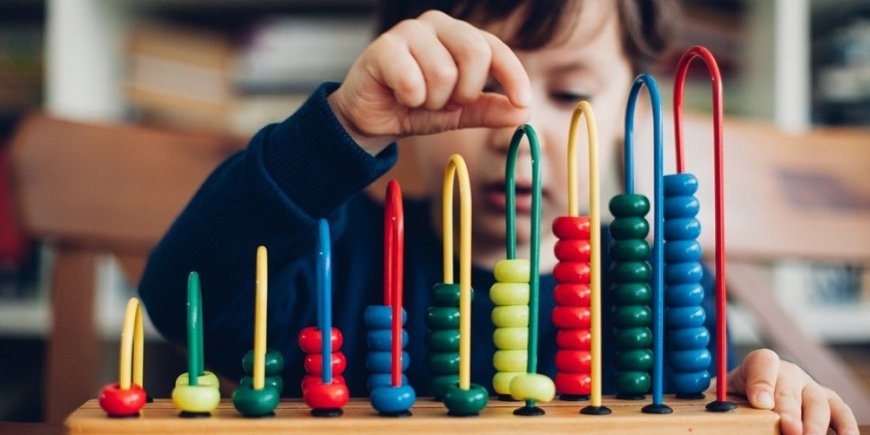How to teach a child to count? Review of methods
adventure for them. What items and activities to use to successfully master the art of correct counting. How to teach a child to count.

Commonly, learning to count is associated with the repetitive and boring activity of writing numbers down on a piece of paper, monotonous sitting at a school desk or solving incomprehensible tasks. However, this is not the only way to learn to count. If we reach for the right resources and interest the youngest in the mathematical world, learning to count may turn out to be a fascinating adventure for them. What items and activities to use to successfully master the art of correct counting. How to teach a child to count.
Math education for children does not only mean compulsory schooling. Learning can be quite natural. Toddlers intuitively learn the rules passed on to them, provided that teaching methods are combined with fun. How to teach a child to count? It is important to pay attention to mathematics in the world around us and show children its daily use.
How to teach a child to count using toys and games
Many toys, such as blocks, mascots or cars, are great tools for learning to count. Together with the child, we can add or subtract individual items: How many dolls do we have? How many wheels do individual cars have, and how many all of them? It is also a good idea to use board games that simultaneously develop the kids' logical thinking and effectively teach math™s. The dice can be used as an example of the principle of "less and more", that is, to illustrate how many fields on the board our pawn will move forward if a specific figure comes out. The child will naturally want to find out what a given value means and whether it is beneficial for him as a player. Thanks to such games, children in a simple and friendly way learn mathematical issues and learn to count.
Must Read: Dyscalculia “ symptoms and diagnosis. Exercises for children with dyscalculia
Learning to count in everyday situations
Everyday activities, such as cooking together, can be used not only to acquire culinary skills, but also mathematics. By preparing specific dishes, you can also learn to count! Let's measure out products, add, subtract. When we cut the pizza into pieces, let's play with the child - divide one into 8 pieces, the other into 6, and ask the toddler what he chooses and why. Here, in an easy and at the same time tasty way, we show our kids fractions and compare them. In a similar way, arithmetic issues should be discussed in all everyday activities, while shopping, walking or cleaning.
Learning to count using everyday objects
Months, days of the week, hours and minutes are of great importance to our daily functioning. Therefore, it is worth using these issues also for learning to count. We may ask your child to indicate how much time is left until the event they are waiting for, such as a birthday or vacation. Using a calendar, a toddler can count the number of days and weeks, and learn about individual units of time measurement. The child is waiting impatiently for his favorite fairy tale or TV program? Let's show him the clock and explain how many minutes are left to broadcast. Experts' observations show that children are much more likely to acquire knowledge by using items that evoke positive feelings in them. Therefore, when learning to count, it is also worth using coins. From early childhood, children observe and participate in situations in which we use money. It is important to ask the right questions during these activities, e.g. how many pennies in one dollar? How many coins do you need to buy a specific toy? While in the store, let's give children a chance to deduct the amount due, and thus let them build a sense of independence and responsibility.
The proposed methods of learning to count can serve as an inspiration to create other, own educational games. It should be remembered that children show a natural curiosity to learn about the surrounding world, including math. All you need to do is show them the right direction of development and provide the right tools at each stage of learning. Parents' openness to discovering math™s on their own and to experimenting their child may prove to be the key to success in mastering the art of counting before starting school.
